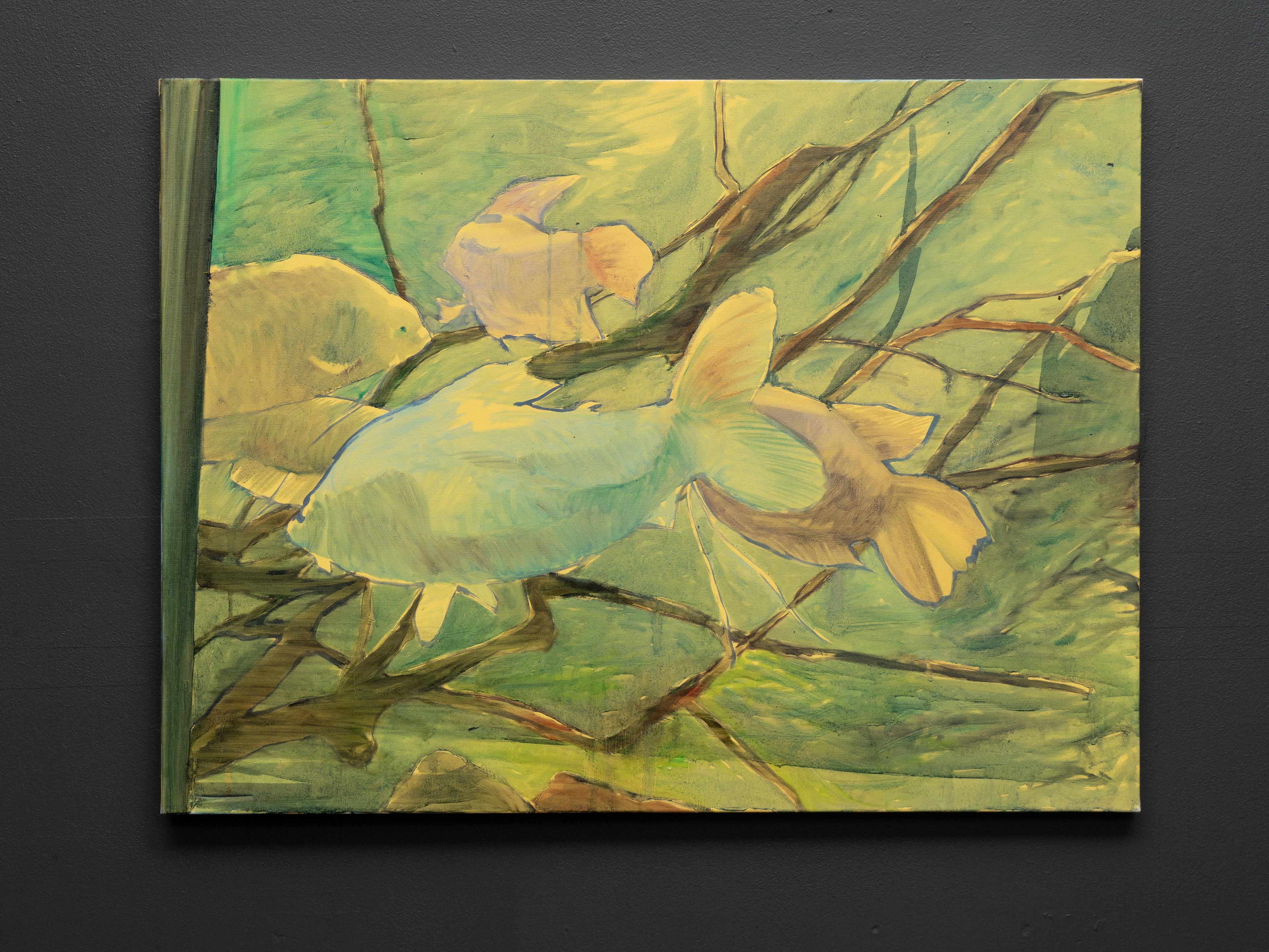
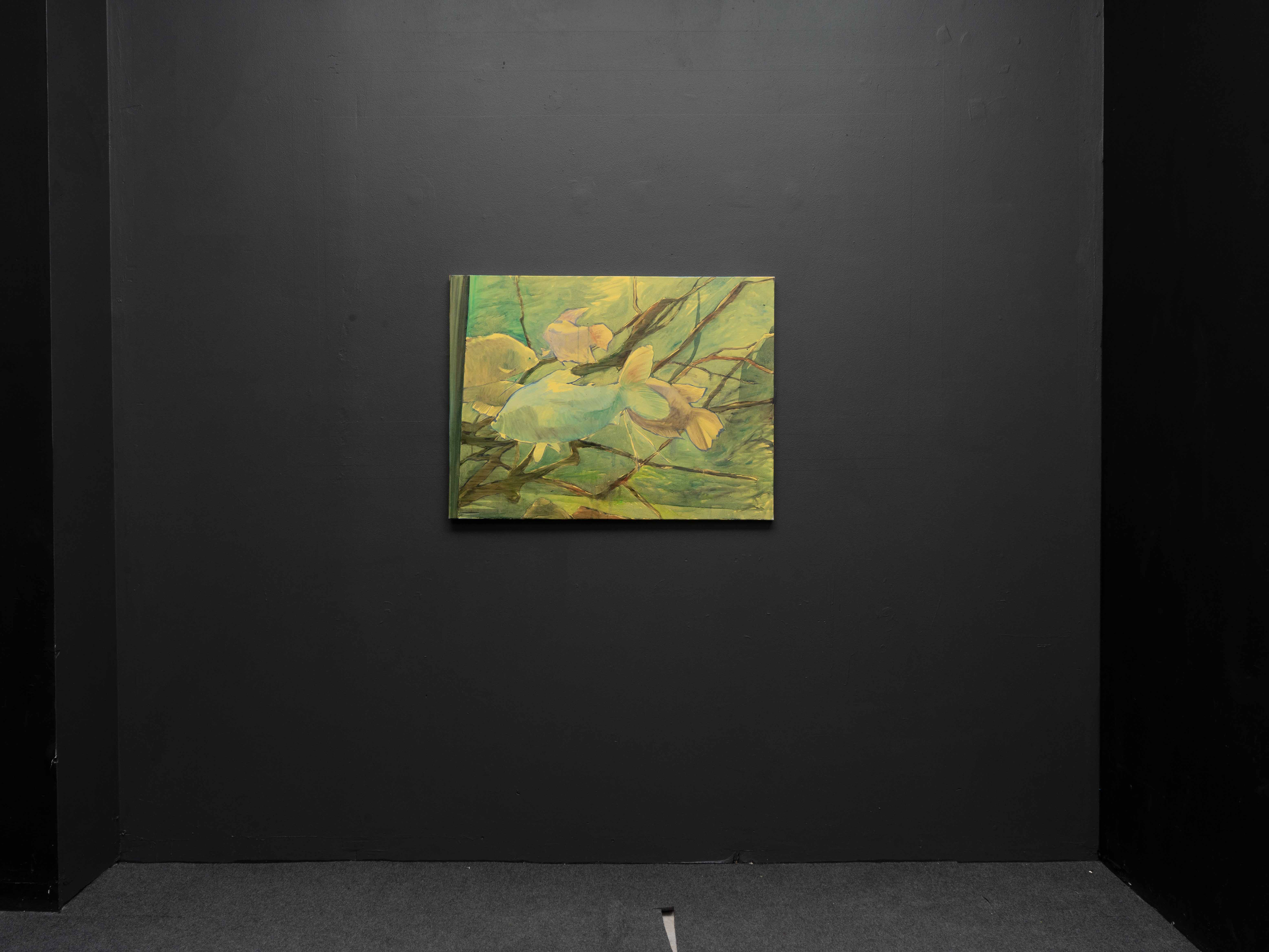
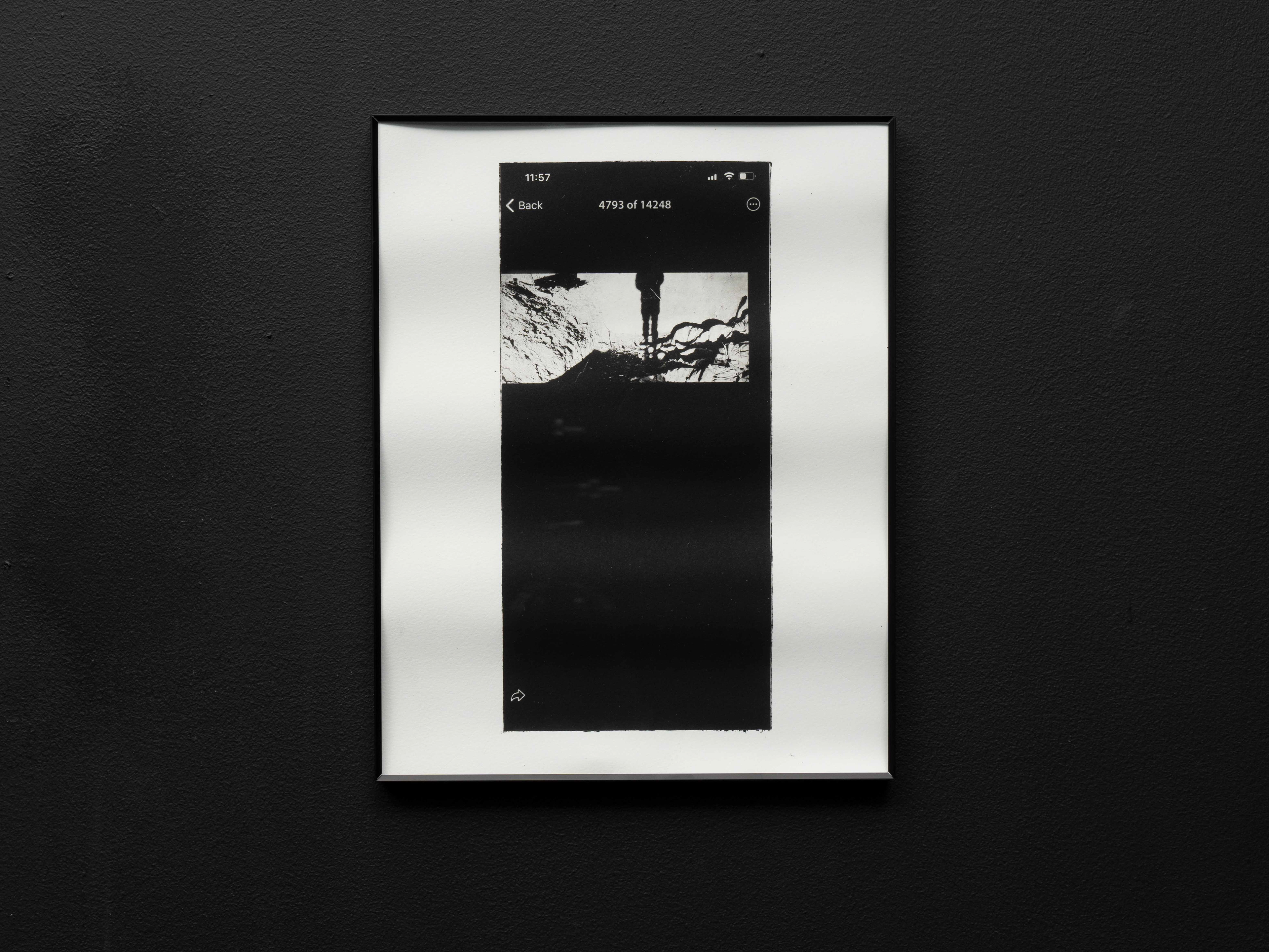
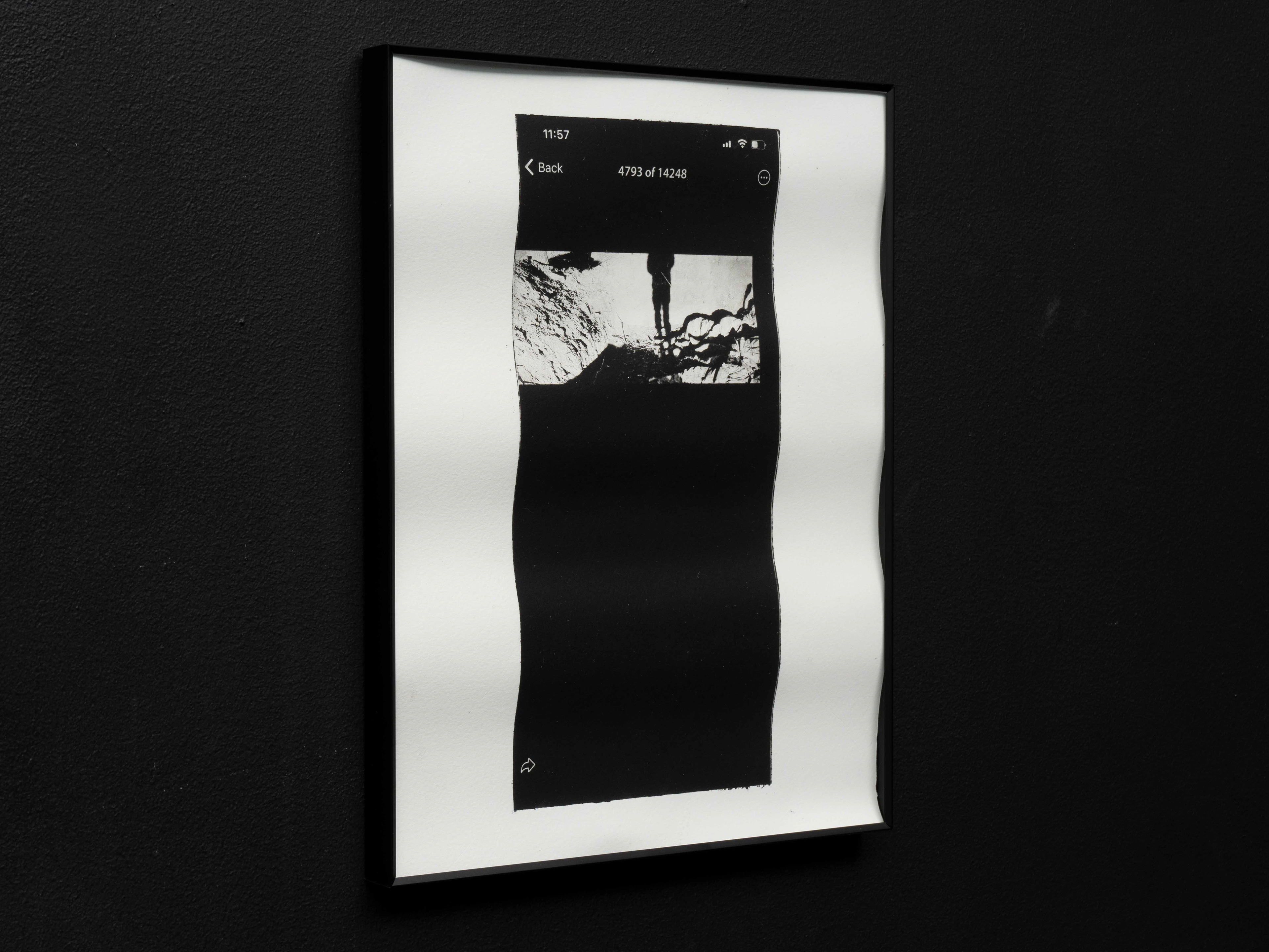
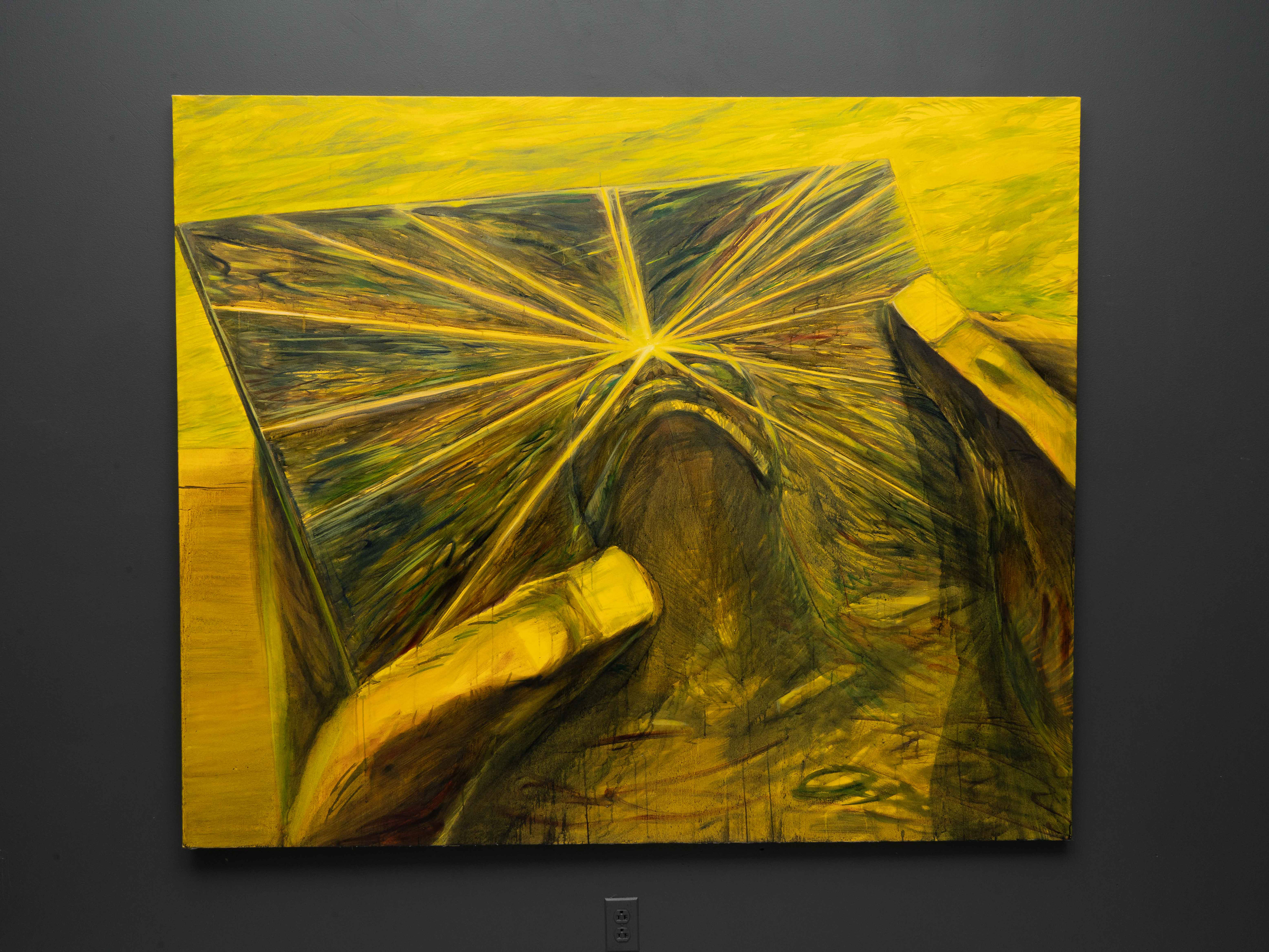
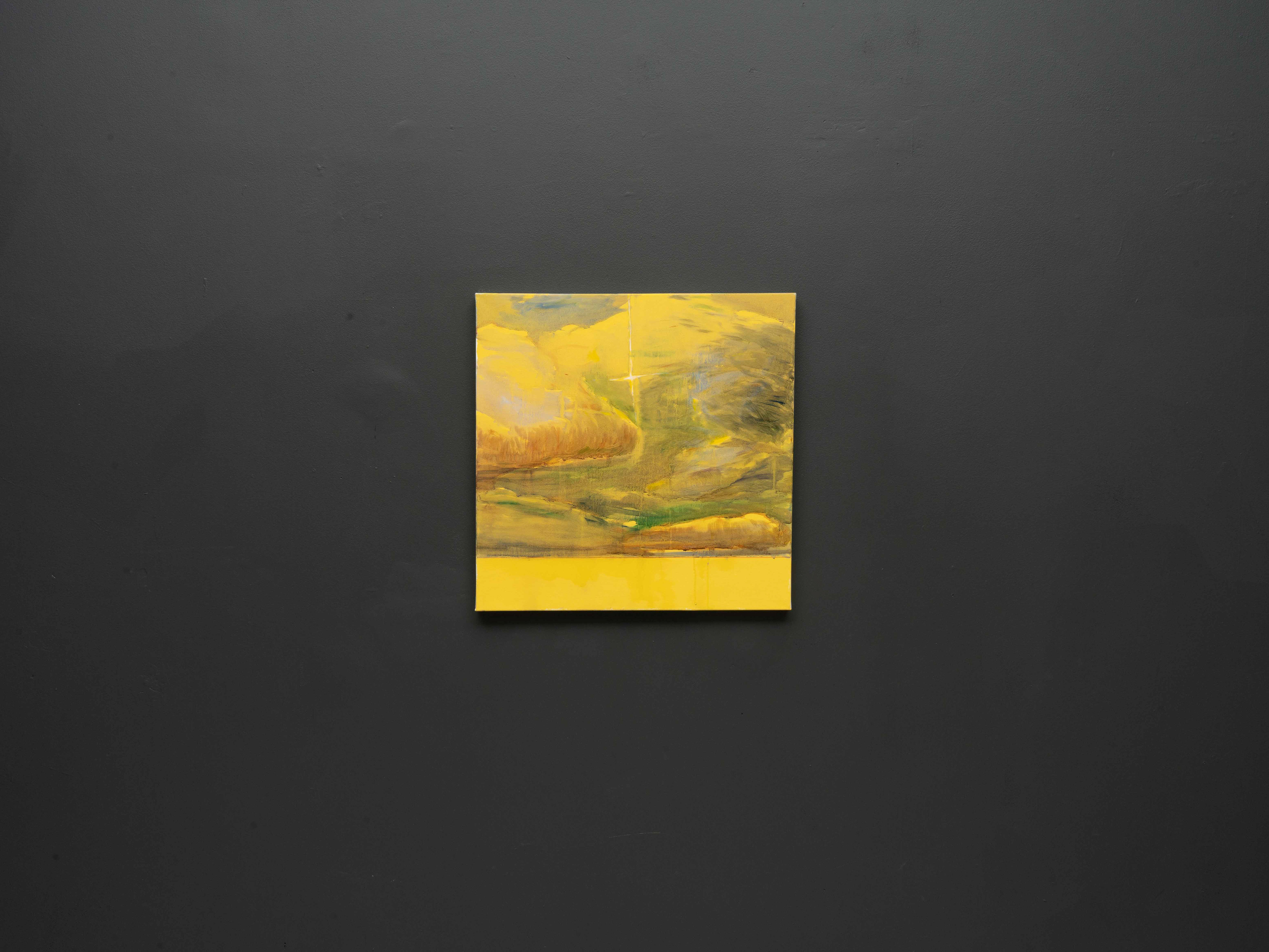
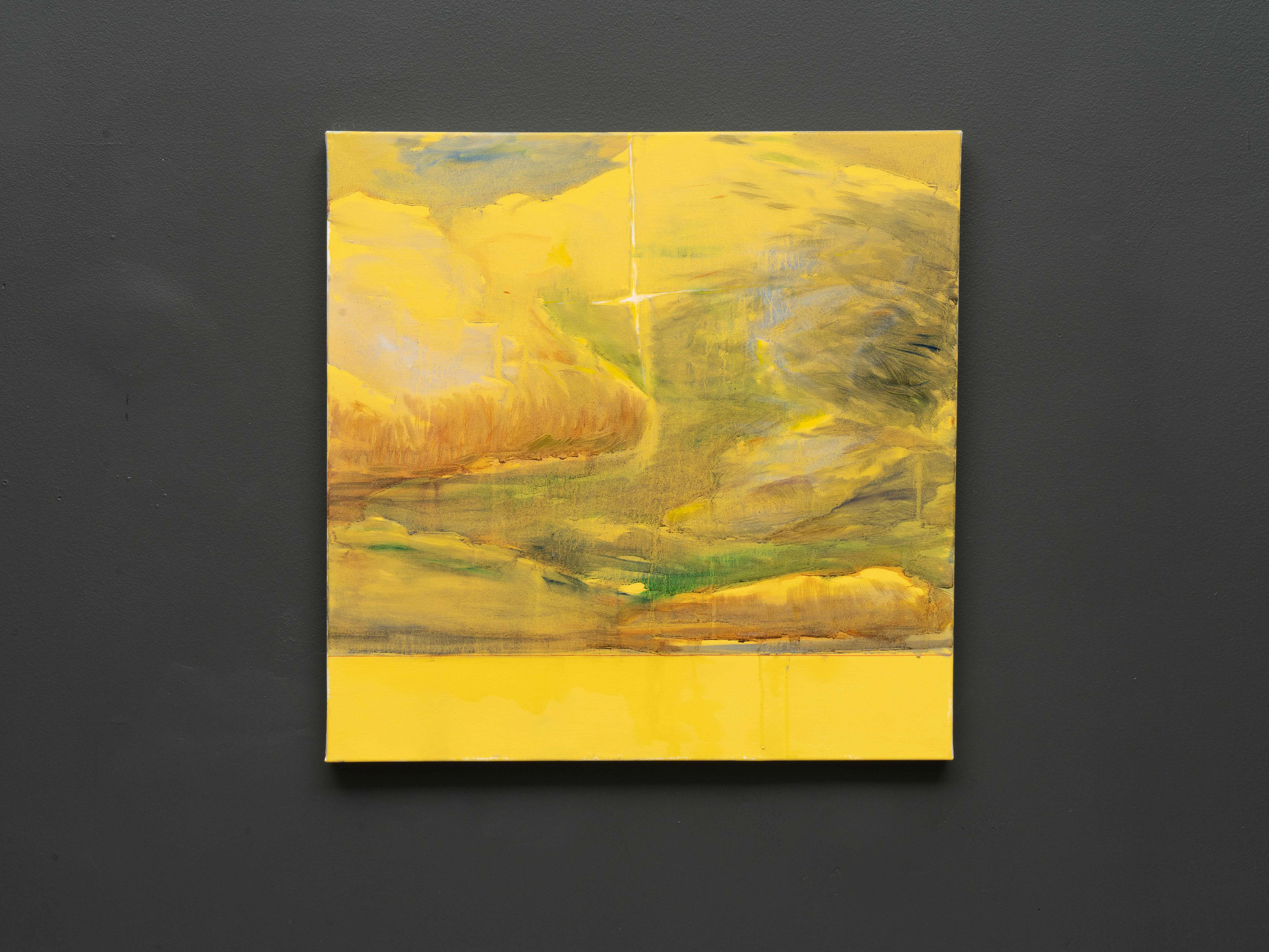
work titles (after exhibition photos, from left to right):
1,2. Fishtank #1, 30 x 40 inch(76 x 102 cm), canvas, oil, 2023
3,4 .4793, 11 x 16 inch(30 x 40 cm), paper, polymer ink print, 2022
5. Object in the landscape, 60 x 72 inch (152 x 182 cm), canvas, oil, 2023
6,7. Quite landscape, 17x 17 inch(43 x 43 cm), canvas, oil, 2022
1,2. Fishtank #1, 30 x 40 inch(76 x 102 cm), canvas, oil, 2023
3,4 .4793, 11 x 16 inch(30 x 40 cm), paper, polymer ink print, 2022
5. Object in the landscape, 60 x 72 inch (152 x 182 cm), canvas, oil, 2023
6,7. Quite landscape, 17x 17 inch(43 x 43 cm), canvas, oil, 2022
Since February 24th, when a new phase of Russian aggression in Ukraine started, it has been hard to work again on the same dystopian landscapes (M.A.L.E.H.), mainly because current events produce their own live-streamed versions of the final apocalyptic visuals. Bucha's, Irpin's, Mariupol's, and others' streets with the laying victims of the massacre and bodies being buried in mass graves forced me to reassess the idea of the final landscape again.
Besides the terrible acts of war in Ukraine, at this point, I am also perplexed by my own experience of the consumption of the war itself. Since the full-scale invasion almost a year ago, following the war from a distance, I found myself submerged in the war Instagram posts from Ukraine, and dozens of uncensored Telegram channels, not to mention the always ongoing news on the radio and YouTube.
The print of the cropped phone screenshot in the exhibit reflects the transparent shadow of the person casting upon a bunch of dead soldiers' bodies, which are already placed in the freshly dug-out grave. The image ends on the shadow's elbows, but from their positioning, we could say that this is probably the person who is taking this photo on his phone for me and thousands of other accounts to see on their phones in a few minutes. Fishtank (in the same room) has an obvious inherited metaphor of surveillance in itself, but the particular image was taken from the personal memory of a particular safe place amidst the terrifying events. The small landscape served as a transitional piece, leading into a new series of paintings focused on life observed through glass. The large canvas incorporates Kojève’s notion of “machines of knowledge,” introducing another dimension that situates the work within a broader epistemological framework.
In one of the texts, Zadie Smith says, "I might want history to convince me that although some identities are chosen, many others are forced. Or that no identities are chosen. Or that all identities are chosen. 'That I feed history. That history feeds me." Since history didn't end again and just made another violent spiral, being forced by this spiral to acquire some traces of the victim's identity, I want now to learn the limits of the feed that I am forced to.
In one of the texts, Zadie Smith says, "I might want history to convince me that although some identities are chosen, many others are forced. Or that no identities are chosen. Or that all identities are chosen. 'That I feed history. That history feeds me." Since history didn't end again and just made another violent spiral, being forced by this spiral to acquire some traces of the victim's identity, I want now to learn the limits of the feed that I am forced to.